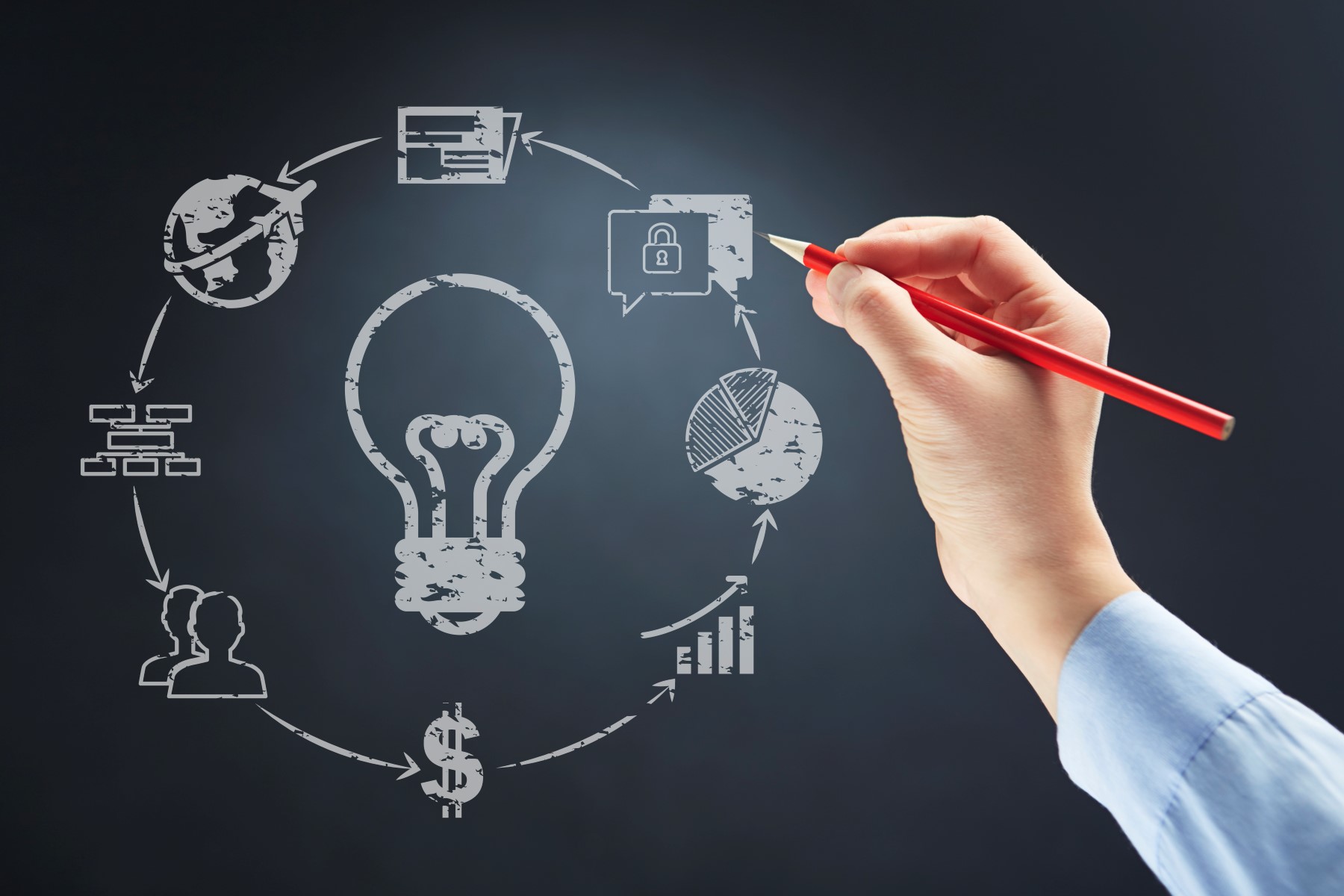Home>Lifestyle>The Secret To Pruning Hydrangeas For Maximum Blooms


Lifestyle
The Secret To Pruning Hydrangeas For Maximum Blooms
Published: February 12, 2024
Discover the best techniques for pruning hydrangeas to ensure abundant blooms in your garden. Enhance your lifestyle with beautiful, thriving plants.
(Many of the links in this article redirect to a specific reviewed product. Your purchase of these products through affiliate links helps to generate commission for Regretless.com, at no extra cost. Learn more)
Table of Contents
Introduction
Pruning hydrangeas is an essential task for any gardener looking to maximize the beauty and vibrancy of these stunning flowering shrubs. Whether you're a seasoned horticulturist or a novice enthusiast, understanding the art of pruning hydrangeas can significantly impact the plant's health and blooming potential. By mastering the techniques of pruning, you can unleash the full splendor of these captivating blooms, transforming your garden into a mesmerizing display of color and elegance.
Hydrangeas are beloved for their large, showy blossoms that adorn gardens with a touch of timeless charm. From the classic mophead and lacecap varieties to the delicate panicle and smooth hydrangeas, each type offers its own unique allure. However, to maintain their health and encourage abundant blooms, proper pruning is crucial. This process not only shapes the plant's growth but also stimulates the production of new buds, ensuring a bountiful display of flowers in the upcoming season.
In this comprehensive guide, we will delve into the intricacies of pruning hydrangeas, providing you with expert insights and practical tips to unlock the full potential of these beloved shrubs. From understanding the different types of hydrangeas to identifying the optimal time for pruning and mastering the essential techniques, this guide will equip you with the knowledge and confidence to elevate your gardening prowess. Additionally, we will explore the tools required for effective pruning and offer valuable tips to maximize the blooms, allowing you to create a captivating floral spectacle in your outdoor sanctuary.
Embark on this enlightening journey to unravel the secrets of pruning hydrangeas, and witness the transformative impact it can have on your garden. With the right approach and a sprinkle of gardening magic, you can cultivate a flourishing haven brimming with the timeless beauty of hydrangeas. Let's embark on this horticultural adventure together and unveil the captivating world of hydrangea pruning.
Understanding Hydrangeas
Hydrangeas, known for their stunning and voluminous blooms, are a diverse genus of flowering plants that belong to the Hydrangeaceae family. These deciduous shrubs are cherished for their ability to thrive in various climates and their capacity to produce an array of captivating flower heads. Understanding the distinct characteristics and growth patterns of hydrangeas is fundamental to effectively pruning them and nurturing their optimal development.
Types of Hydrangeas
Hydrangeas encompass a spectrum of cultivars, each distinguished by unique traits and flowering habits. The most common varieties include the mophead (Hydrangea macrophylla), lacecap (Hydrangea macrophylla normalis), panicle (Hydrangea paniculata), and smooth (Hydrangea arborescens) hydrangeas. These varieties exhibit differences in their bloom shapes, foliage textures, and growth habits, offering a diverse tapestry of options for gardeners to explore.
Flowering Habits
Understanding the flowering habits of hydrangeas is crucial for successful pruning. Mophead and lacecap hydrangeas bloom on old wood, meaning that their flower buds form in the previous growing season. In contrast, panicle and smooth hydrangeas bloom on new wood, with their flower buds developing in the current season. This differentiation in blooming patterns influences the timing and approach to pruning, as it directly impacts the plant's ability to produce blossoms.
Growth Conditions
Hydrangeas flourish in moist, well-drained soil and generally prefer partial shade, especially during the hottest parts of the day. While their water requirements vary based on the specific variety, maintaining consistent soil moisture is essential for healthy growth and prolific blooming. Additionally, understanding the optimal light conditions and soil composition for each hydrangea type is instrumental in providing the ideal environment for their development.
Color Variability
One of the most enchanting aspects of hydrangeas is their remarkable color variability. The bloom color of hydrangeas can be influenced by factors such as soil pH, with acidic soils tending to produce blue flowers and alkaline soils yielding pink blooms. This stunning color transformation adds an element of intrigue to hydrangea cultivation, allowing gardeners to manipulate the soil pH to achieve their desired floral hues.
Pruning Considerations
Comprehending the growth and flowering habits of different hydrangea varieties is pivotal when devising a pruning strategy. By recognizing the specific type of hydrangea and its blooming pattern, gardeners can tailor their pruning techniques to optimize blooming potential while maintaining the shrub's overall health and vigor.
With a deeper understanding of the intricacies of hydrangeas, you can embark on the journey of nurturing these exquisite shrubs with confidence and finesse. By grasping their diverse traits, blooming habits, and environmental preferences, you can cultivate a profound appreciation for the captivating world of hydrangeas and harness their full ornamental splendor.
When to Prune Hydrangeas
Pruning hydrangeas at the right time is pivotal for ensuring abundant blooms and maintaining the overall health of the shrubs. The timing of pruning is intricately linked to the blooming habits of different hydrangea varieties, as it directly influences the formation of flower buds and the subsequent flowering display. Understanding the specific blooming patterns of hydrangeas is essential for determining the optimal time to prune, thereby maximizing the potential for a profusion of exquisite blossoms.
Mophead and Lacecap Hydrangeas
For mophead and lacecap hydrangeas, which bloom on old wood, the ideal time for pruning is immediately after they have finished flowering. Since these varieties form their flower buds in the previous growing season, pruning them in late summer or early fall can disrupt the development of new buds and diminish the following year's floral showcase. By promptly pruning these hydrangeas after they have bloomed, typically in late summer to early fall, gardeners can facilitate the growth of new shoots and ensure the formation of robust flower buds for the upcoming season.
Panicle and Smooth Hydrangeas
In contrast, panicle and smooth hydrangeas, which bloom on new wood, are best pruned during late winter or early spring while they are still dormant. Since these varieties produce their flower buds on the current season's growth, pruning them in late winter or early spring allows ample time for new shoots to emerge and develop flower buds for the forthcoming blooming period. By trimming these hydrangeas during their dormant phase, typically in late February to early March, gardeners can encourage vigorous new growth and set the stage for a stunning floral display in the coming months.
Climbing Hydrangeas
Climbing hydrangeas, known for their sprawling vines and captivating blooms, also benefit from strategic pruning. To maintain their graceful form and promote optimal flowering, pruning these vigorous climbers is recommended immediately after they have finished blooming. By trimming back any unruly or excessive growth and shaping the vines in late summer, gardeners can encourage a robust display of blooms and uphold the structural integrity of these enchanting climbers.
By adhering to these tailored pruning timelines based on the blooming habits of different hydrangea varieties, gardeners can harness the full potential of these exquisite shrubs and orchestrate a symphony of resplendent blooms throughout the growing season. Armed with this knowledge, you can embark on the art of pruning hydrangeas with confidence, ensuring a breathtaking spectacle of floral abundance in your garden.
Tools Needed for Pruning
To embark on a successful hydrangea pruning journey, it is essential to equip yourself with the appropriate tools to execute precise and effective cuts while safeguarding the overall health of the shrubs. The following tools are indispensable for mastering the art of hydrangea pruning:
-
Pruning Shears: Also known as hand pruners, these are fundamental for making accurate and clean cuts on smaller branches and stems. Opt for a high-quality pair with sharp blades to ensure effortless cutting without causing unnecessary damage to the plant tissues.
-
Loppers: Designed for cutting thicker branches and stems, loppers provide the leverage and strength required to tackle more substantial growth. Look for loppers with extendable handles and robust cutting blades to facilitate efficient pruning of larger hydrangea branches.
-
Pruning Saw: For tackling dense or hard-to-reach branches, a pruning saw is indispensable. Its serrated blade enables precise and controlled cutting of larger branches, allowing you to sculpt the hydrangeas with finesse while promoting healthy regrowth.
-
Gloves: Investing in a pair of sturdy gardening gloves is vital for protecting your hands while pruning. Opt for gloves that offer a balance of dexterity and protection, shielding your hands from thorns, rough surfaces, and potential irritants.
-
Protective Eyewear: Safeguarding your eyes during pruning is paramount, especially when dealing with branches that may snap or release debris. Utilize protective eyewear to shield your eyes from any stray twigs or particles, ensuring a safe and comfortable pruning experience.
-
Disinfectant: Keeping your cutting tools clean and free from harmful pathogens is crucial for preventing the spread of diseases among plants. Use a mild disinfectant solution to sterilize your pruning equipment before and after each use, minimizing the risk of transmitting infections to the hydrangeas.
-
Pruning Sealant: While not always necessary, a pruning sealant can be beneficial for larger cuts to protect the exposed surfaces from moisture loss and potential infections. Opt for a high-quality pruning sealant to safeguard the pruned areas and promote optimal healing of the plant tissues.
By assembling these essential tools, you can elevate your pruning endeavors and ensure the health, vitality, and aesthetic appeal of your hydrangeas. With the right equipment at your disposal, you can approach the art of pruning with confidence and precision, nurturing your beloved shrubs into flourishing botanical marvels.
Remember, each of these tools plays a pivotal role in executing precise and considerate pruning, allowing you to sculpt your hydrangeas with finesse and promote their overall well-being. With these tools in hand, you are poised to embark on a transformative journey of nurturing and beautifying your garden oasis through the art of hydrangea pruning.
Step-by-Step Guide to Pruning
Pruning hydrangeas is a delicate art that requires precision, attentiveness, and a deep understanding of the plant's growth habits. By following a systematic approach to pruning, you can effectively shape the shrubs, stimulate new growth, and optimize the production of vibrant blooms. Here is a comprehensive step-by-step guide to pruning hydrangeas, ensuring that you can embark on this horticultural endeavor with confidence and finesse.
Read more: The Appeal Of Azaleas And Rhododendrons: Exploring Their Short But Spectacular Blooming Period
1. Assess the Hydrangea
Before commencing the pruning process, carefully evaluate the hydrangea shrub to identify any damaged, diseased, or overgrown branches. Additionally, observe the overall shape and structure of the plant, noting areas that require attention and potential areas for selective pruning.
2. Select the Pruning Method
Determine the pruning method based on the specific type of hydrangea you are tending to. For mophead and lacecap hydrangeas, focus on removing spent blooms and thinning out crowded stems to encourage air circulation. For panicle and smooth hydrangeas, target the removal of older, woodier stems to promote the emergence of fresh growth.
3. Begin Pruning
Using the appropriate pruning tools, commence the pruning process by making clean, angled cuts just above a set of healthy buds or lateral branches. Remove any dead, damaged, or crossing branches, ensuring that each cut is executed with precision to minimize stress on the plant.
4. Shape the Hydrangea
As you progress with the pruning, aim to sculpt the hydrangea into a balanced and aesthetically pleasing form. Trim back any excessively long or unruly branches, maintaining the natural contour of the shrub while promoting a harmonious growth pattern.
5. Prune with Purpose
Be mindful of the overarching objective of pruning, which is to invigorate the plant, stimulate new growth, and enhance blooming potential. Focus on strategic cuts that facilitate the development of robust, healthy shoots and encourage the proliferation of flower buds for the upcoming season.
6. Monitor and Maintain
After completing the pruning process, monitor the hydrangea's response to the cuts and observe the emergence of new growth. Maintain consistent care and attention, providing the shrub with the necessary nutrients, water, and environmental conditions to support its post-pruning recovery and subsequent blooming cycle.
By meticulously following this step-by-step guide to pruning hydrangeas, you can cultivate a deeper connection with your garden and nurture these enchanting shrubs to reach their full ornamental splendor. With patience, precision, and a touch of horticultural finesse, you can embark on a transformative journey of elevating your outdoor sanctuary through the art of hydrangea pruning.
Tips for Maximizing Blooms
-
Strategic Fertilization: Applying a balanced, slow-release fertilizer in spring can provide the necessary nutrients for robust growth and abundant blooms. Opt for a fertilizer with a higher phosphorus content to promote flower production, and refrain from over-fertilizing to prevent excessive foliage at the expense of blooms.
-
Consistent Moisture: Hydrangeas thrive in consistently moist soil, especially during the critical stages of bud formation and flowering. Regular watering, particularly during dry spells, is essential to sustain optimal blooming conditions and prevent stress-induced flower loss.
-
Mulching Magic: Applying a layer of organic mulch around the base of the hydrangea can help retain soil moisture, regulate temperature, and suppress weed growth. This protective mulch layer also contributes to a conducive environment for healthy root development, supporting the shrub's overall vitality and blooming potential.
-
Sunlight Balance: While partial shade is generally favorable for most hydrangea varieties, ensuring an appropriate balance of sunlight is crucial for maximizing blooms. Providing morning sun and afternoon shade can stimulate prolific flowering while safeguarding the plant from excessive heat and potential sun damage.
-
Pruning Precision: Adhering to the appropriate pruning timelines and techniques is paramount for promoting vigorous growth and bountiful blooms. By selectively removing spent blooms, thinning out crowded growth, and shaping the shrub with purpose, you can direct the plant's energy towards producing an abundance of vibrant flowers.
-
pH Management: Manipulating soil pH can influence the color of certain hydrangea varieties, adding an enchanting dimension to your garden's floral palette. For blue blooms, maintain acidic soil conditions, while alkaline soil fosters pink or red hues. Conduct a soil test and adjust the pH as needed to achieve your desired color spectrum.
-
Winter Protection: Shielding the hydrangeas from harsh winter conditions, particularly in colder climates, can safeguard the flower buds and ensure a robust blooming season. Employing protective coverings or strategic planting locations can mitigate winter damage and preserve the potential for an impressive floral display.
By integrating these tips into your horticultural practices, you can create an optimal environment for your hydrangeas to flourish and showcase an exuberant profusion of blooms. With attentive care, thoughtful maintenance, and a touch of gardening finesse, you can elevate the blooming capacity of your hydrangeas, transforming your garden into a captivating haven of natural splendor.
Conclusion
In the realm of gardening, the art of pruning hydrangeas transcends mere horticultural maintenance; it embodies a profound connection with nature and an unwavering commitment to nurturing botanical beauty. As we conclude this enlightening exploration of hydrangea pruning, it is evident that the journey of tending to these exquisite shrubs is a harmonious blend of artistry, science, and unwavering dedication.
The secrets unveiled within this guide have illuminated the path to unlocking the full potential of hydrangeas, empowering gardeners to orchestrate a symphony of resplendent blooms within their outdoor sanctuaries. From understanding the diverse traits and blooming habits of different hydrangea varieties to mastering the precise techniques of pruning, we have delved into the intricate tapestry of horticultural wisdom, enriching our appreciation for these beloved flowering shrubs.
By comprehending the optimal timing for pruning, selecting the right tools, and following a systematic approach, gardeners can embark on a transformative journey of sculpting their hydrangeas into flourishing botanical marvels. The step-by-step guide provided a roadmap for precision and finesse, ensuring that each cut made is a testament to thoughtful care and a catalyst for abundant blooms.
Furthermore, the invaluable tips for maximizing blooms have illuminated the nuanced nuances of hydrangea care, offering a holistic approach to nurturing these captivating shrubs. From strategic fertilization and moisture management to the delicate art of pH manipulation, these insights have empowered gardeners to create an optimal environment for their hydrangeas to thrive and flourish.
As we bid adieu to this horticultural odyssey, let us carry forth the wisdom garnered within these pages and infuse our gardening endeavors with a renewed sense of purpose and passion. Let us embrace the transformative power of pruning, recognizing it as a timeless dance with nature, where each precise cut and nurturing gesture contributes to the flourishing of our botanical companions.
May the secrets of hydrangea pruning continue to inspire and guide us, fostering a deeper connection with the natural world and adorning our gardens with the timeless allure of these magnificent flowering shrubs. With patience, diligence, and a touch of horticultural finesse, may our gardens bloom with the resplendent beauty of hydrangeas, echoing the harmonious symphony of nature's enduring grace.











